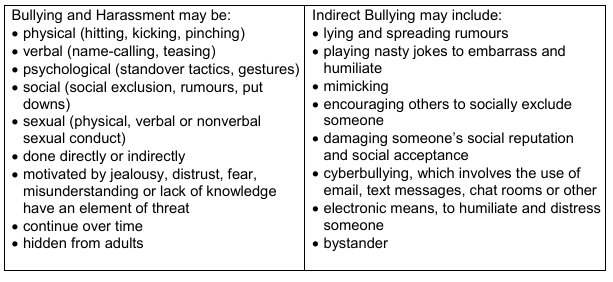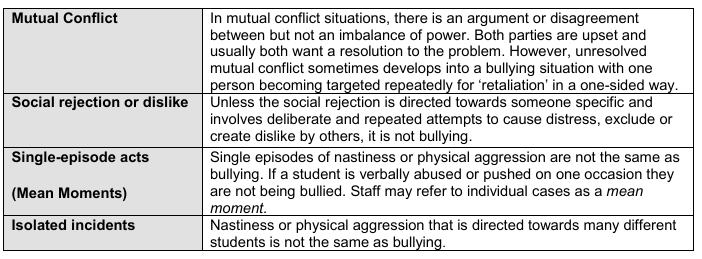Bullying and Harassment:
Bullying and harassment are often thought of separately; however both involve a more
powerful person or group oppressing a less powerful person or group, often on the grounds of
'difference'. These differences can be related to culture, ethnicity, gender, sexuality, sexual
orientation, ability or disability, religion, body size and physical appearance, age, marital status,
parenting status or economic status.
Peregian Springs State School has adopted the following ‘Kid Friendly’ definition of bullying
as provided by Dr Ken Rigby from the School of Education at the University of South
Australia. 

What Bullying/Harassment is Not:
Many distressing behaviours are not examples of bullying, even though they are unpleasant
and often require teacher intervention and management. There are four socially unpleasant
situations that are often confused with bullying:

These conflicts are still considered serious and need to be addressed and resolved. At
Peregian Springs State School our staff will work to quickly respond to any matters raised of
this nature in collaboration with students and parents.
For information on Preventing and responding to bullying at Peregian Springs State School, read our Student Code of Conduct 2025-2028.
All staff members are committed to consistent procedures for preventing and responding to incidents of harassment and bullying.